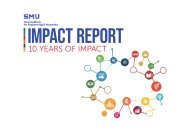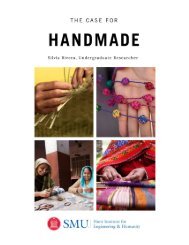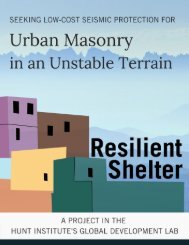Bridging the Gap in Diagnostics
Traditionally, biomedical engineers have developed technologies in response to the needs of the developed world’s medical community. These approaches often do not address the needs of the majority of the world’s peoples afflicted with both communicable and non-communicable diseases as the developments are far too costly and those with most need have, at best, limited access to supporting clinical laboratory infrastructure in developing countries. A gap in care has emerged as a result of these conditions. As a result, Drs. Beskok and Koklu have developed a Lab on a Chip technology that can test for a chosen disease with a turnaround time of just a few seconds and a detection limit of 1 ng of antigen per 1 mL of sample fluid. This is a great improvement to current devices on the market and is particularly useful in high-throughput, low-skill staffing environments. This report researched and authored by an interdisciplinary group of undergraduate students at the Southern Methodist University working in the Hunt Institute aims to address the areas of greatest need in response to UNSDG #3 "to ensure healthy lives and promote wellbeing for all at all ages."
Traditionally, biomedical engineers have developed technologies in response to the needs of the developed world’s medical community. These approaches often do not address the needs of the majority of the world’s peoples afflicted with both communicable and non-communicable diseases as the developments are far too costly and those with most need have, at best, limited access to supporting clinical laboratory infrastructure in developing countries. A gap in care has emerged as a result of these conditions. As a result, Drs. Beskok and Koklu have developed a Lab on a Chip technology that can test for a chosen disease with a turnaround time of just a few seconds and a detection limit of 1 ng of antigen per 1 mL of sample fluid. This is a great improvement to current devices on the market and is particularly useful in high-throughput, low-skill staffing environments. This report researched and authored by an interdisciplinary group of undergraduate students at the Southern Methodist University working in the Hunt Institute aims to address the areas of greatest need in response to UNSDG #3 "to ensure healthy lives and promote wellbeing for all at all ages."
You also want an ePaper? Increase the reach of your titles
YUMPU automatically turns print PDFs into web optimized ePapers that Google loves.
As a result, Drs. Beskok and Koklu have developed a Lab on a Chip technology that can
test for a chosen disease with a turnaround time of just a few seconds and a detection limit of 1
ng of antigen per 1 mL of sample fluid. This is a great improvement to current devices on the
market and is particularly useful in high-throughput, low-skill staffing environments.
In creating disease selection criteria for Dr. Beskok and his team’s device, several factors
were taken into consideration. Generally, the selection criteria consists of diseases that result in a
high DALY value, are communicable, identifiable with antibody-antigen reactions, and can be
tested for using urine. The diseases that were identified with this criterion were Tuberculosis and
Malaria.
Various antibody-antigen recommendations for diagnosis, advantages, and limitations of
the proposed point of care device are discussed in the Proposed Disease section. In addition,
current funding for each disease is overviewed.
In order to make the greatest impact, deployment of the PoCD in the Sub-Saharan region,
most specifically the Democratic Republic of Congo and Sierra Leone are recommended.
Furthermore, children under the age of 5 who suffer from malnutrition should be given special
attention. Focusing in these locations and populations will best aid in accomplishing the third
Sustainable Development Goal set out by the UN: to ensure healthy lives and promote wellbeing
for all at all ages.
Figure 2: Sienna Dugan attending a severely malnourished infant in a Refugee Camp clinic as an intern for ADRA
International
8













